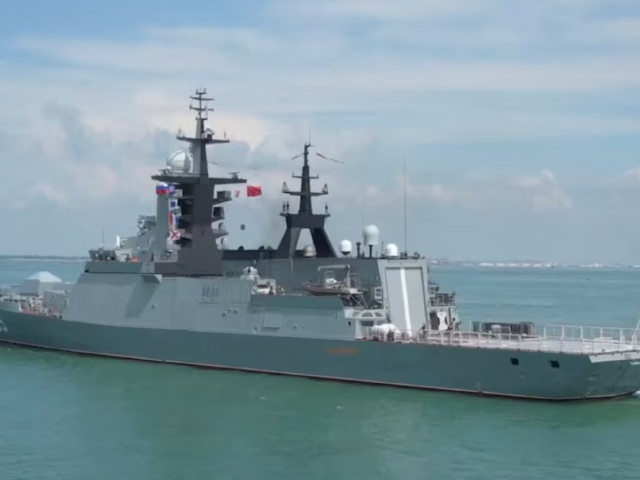
China and Russia carried out live-fire naval exercises in the South China Sea this week, Russian and Chinese state media reported, with the two countries having strengthened military and trade ties in recent years following US sanctions.
Both countries were to deploy at least three vessels each for the three-day exercises, China's state controlled Global Times newspaper said late on Tuesday, citing the People's Liberation Army Navy.
The opening ceremony of the Russian-Chinese naval exercise 'Maritime Cooperation - 2024' took place in the Chinese port of Zhanjiang, the Russian defence ministry said earlier this week on the Telegram messaging app.
During their sea manoeuvres, the crews of ships of the Russian Pacific Fleet and the PLA Navy were to conduct joint air defense exercises and anti-submarine drills with the involvement of PLA naval anti-submarine aviation, the Russian defence ministry said.
Russia's RIA state news agency reported on Tuesday, citing Russia's Pacific Fleet, that the Russian Navy and the Chinese Navy conducted artillery firing as part of the joint drills.
The drills follow the completion of a separate joint naval patrol in the north Pacific, which the Russian defence ministry said earlier involved a detachment of Russia's Pacific Fleet ships, including two corvettes, the Rezky and the Gromky.
Hollywood actor and musician Jack Black has ended a tour for his comedy rock duo Tenacious D after bandmate Carl Gass made comments about the assassination attempt on former US President Donald Trump.
Wang Guangzheng of the PLA Navy's Southern Theatre told Chinese state broadcaster CCTV on Tuesday that: "the China-Russia joint patrol has promoted the deepening and practical cooperation between the two in multiple directions and fields."
"And effectively enhanced the ability to the two sides to jointly respond to maritime security threats."
The participating vessels set off from Zhanjiang in southern China's Guangdong province on Monday, the report added, citing a PLA Navy statement.
The report did not specify where in the contested waterway the drills took place.
On Tuesday in the same sea, the United States and Philippine coast guards also conducted joint training, a bilateral search and rescue exercise, according to a statement by the US Navy released on Wednesday.
The operations, involving a US Coast Guard cutter from the US 7th Fleet and a Philippine patrol vessel, included a joint sail and search and rescue training, personnel transfer evolutions, and bilateral sailing.
"We look forward to fostering our relationship as we strive to preserve a free and open Indo-Pacific," US Navy Captain Tyson Scofield, who commands the Coast Guard cutter, said in the statement, which added that such operations help develop tactical interoperability across allied navies in the Indo-Pacific.
China claims control over almost the entire South China Sea, including the disputed Second Thomas Shoal, where the Philippines maintains a rusty warship that it deliberately grounded in 1999 to reinforce its maritime claims and has been central to a recent standoff between the two countries.
The rising tensions have led US officials to remind Beijing that their mutual defence treat obligations with the Philippines are ironclad.
China and Russia declared a "no limits" partnership in 2022 when President Vladimir Putin visited Beijing just days before the invasion of Ukraine. China has still not condemned the invasion and has stepped up its exports to Russia, helping Moscow keep its war economy afloat.
The "no limits" partnership saw two-way trade hit a record of $240.1 billion in 2023, up 26.3% from a year earlier, according to Chinese customs data.
China-U.S. trade fell 11.6% last year to $664.5 billion, Chinese customs data shows.
1732063440-0/elon-(3)1732063440-0-405x300.webp)

1732062434-0/elon-(2)1732062434-0-165x106.webp)

















COMMENTS
Comments are moderated and generally will be posted if they are on-topic and not abusive.
For more information, please see our Comments FAQ